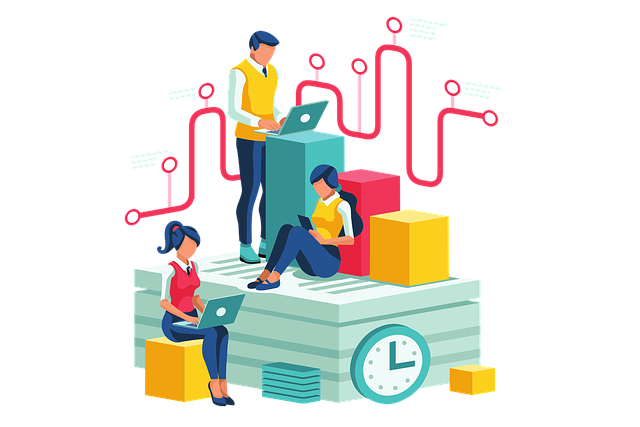AI chatbot integrations on platforms like Facebook are revolutionizing personalized marketing in dynamic sectors such as food service. These chatbots, using natural language processing, understand and respond to customer queries in real-time, facilitating orders, answering menu questions, and providing tailored recommendations based on past purchases or preferences. By analyzing user data, AI chatbots suggest new dishes and enhance customer satisfaction, while empowering businesses to gather valuable insights for targeted marketing campaigns. Implementing these integrations on Facebook food ordering platforms is a strategic move, involving identifying business needs, choosing the right platform, designing conversational flows, integrating with Facebook, testing, training, and ongoing monitoring to drive enhanced user experiences and sales.
In today’s digital era, personalized marketing is key to engaging customers. AI business systems, particularly AI chatbots integrated with platforms like Facebook, are revolutionizing how brands interact with their audience. This article explores the power of AI chatbot integrations for personalized marketing strategies, highlighting benefits such as enhanced customer service and tailored experiences. We’ll delve into practical steps for businesses looking to implement AI chatbots, focusing on AI-powered food order systems on Facebook as a compelling use case study.
- Understanding AI Chatbot Integrations for Personalized Marketing
- Benefits of AI-Powered Food Order Systems on Facebook
- Implementing AI Chatbots: A Step-by-Step Guide for Businesses
Understanding AI Chatbot Integrations for Personalized Marketing

AI chatbot integrations are transforming personalized marketing, especially in dynamic sectors like food service. By leveraging natural language processing, chatbots can understand and respond to customer queries in real-time, enhancing the user experience on platforms like Facebook. For instance, an AI chatbot integrated into a restaurant’s Facebook page could facilitate orders, answer frequent questions about menu items, and even provide tailored recommendations based on past purchases or preferences.
This level of personalization goes beyond basic targeted advertising. Chatbots can gather and analyze customer data to create nuanced user profiles, enabling businesses to deliver hyper-individualized marketing campaigns. In the context of Facebook food orders, an AI chatbot could suggest new dishes based on a customer’s previous orders or location-based preferences, increasing the likelihood of conversions and fostering stronger customer loyalty.
Benefits of AI-Powered Food Order Systems on Facebook

The integration of AI chatbots into Facebook’s food ordering system has brought about a revolution in personalized marketing, offering numerous advantages for businesses and customers alike. This innovative approach leverages the power of artificial intelligence to provide a seamless and customized dining experience. With AI chatbots, users can simply interact through conversational interfaces, making orders faster and more efficient. The system learns from user preferences, allowing it to suggest tailored menu options based on previous purchases and interactions.
Moreover, AI-powered systems can handle complex queries, understand specific dietary requirements, and offer recommendations, enhancing customer satisfaction. These chatbots also enable businesses to gather valuable data, analyze ordering patterns, and gain insights into consumer behavior. This data-driven approach facilitates targeted marketing campaigns, promoting relevant offers and discounts to individual customers, thus increasing engagement and sales potential.
Implementing AI Chatbots: A Step-by-Step Guide for Businesses

Implementing AI chatbots is a powerful strategy for businesses aiming to enhance their personalized marketing efforts, particularly in the realm of online food ordering platforms. Here’s a step-by-step guide to help businesses integrate AI chatbot systems, focusing on Facebook food order integrations as a popular use case:
1. Identify Your Business Needs: Begin by understanding your specific requirements. Do you want a chatbot to handle basic orders and inquiries or cater to complex customer support? Define the scope of interaction you envision between your chatbot and customers, keeping in mind the seamless integration with your existing Facebook page.
2. Choose the Right AI Chatbot Platform: With numerous options available, select a platform that aligns with your business goals. Look for tools offering customization capabilities, natural language processing (NLP) for context-aware conversations, and easy integration with Facebook’s API. Some platforms provide pre-built templates for food ordering systems, making the setup process more efficient.
3. Design Conversational Flows: Create a detailed conversation map outlining various customer journeys. Define how the chatbot will guide users through the ordering process, handle preferences, and offer recommendations. Consider different scenarios, such as a new user placing an order or a returning customer seeking specific menu items. Each flow should be tailored to provide a personalized experience.
4. Integrate with Facebook: Connect your AI chatbot platform to your Facebook page using the provided APIs. This step involves configuring access tokens and setting up permissions to ensure seamless data exchange between Facebook and your chatbot system. Ensure that user interactions on your Facebook page are tracked and utilized to enhance future conversations.
5. Test and Train: Before launching, thoroughly test the chatbot’s functionality and accuracy. Use a mix of common queries and edge cases to identify potential issues. Train the AI model by providing diverse input data, especially relevant to food ordering. Regular testing and training will improve the chatbot’s performance over time, ensuring it delivers accurate and contextually appropriate responses.
6. Launch and Monitor: Once your AI chatbot is integrated and optimized, go live! Continuously monitor its performance, analyzing user interactions and feedback. Regularly update the chatbot’s knowledge base to include new menu items, promotions, or changes in your business operations.
AI chatbot integrations are transforming the way businesses interact with customers, particularly in dynamic sectors like food service. By leveraging AI technology, such as Facebook’s order systems, companies can streamline operations, enhance customer experiences, and drive sales through personalized marketing. As seen in our exploration of AI chatbot applications and implementation strategies, embracing these innovations is not just a trend but a necessary step towards staying competitive in today’s digital landscape. Specifically, AI chatbots offer 24/7 availability, accurate order processing, and tailored recommendations that keep customers engaged. With the right approach, businesses can harness these benefits to drive growth and create memorable customer experiences.
